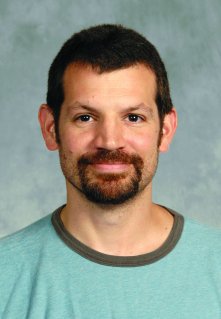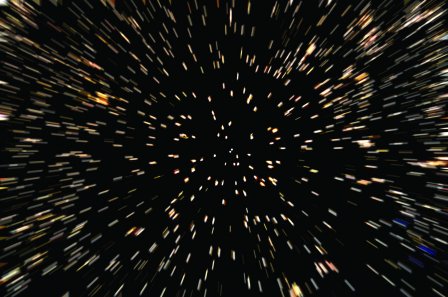It's open season on supernovae, as the Weizmann Institute of Science brings experimental astrophysicist and supernova hunter Dr. Avishay Gal-Yam to campus. Dr. Gal-Yam joins the Department of Astrophysics, which is expanding to include experimental astrophysics alongside its existing theoretical astrophysics research.
What is the difference between the experimental and theoretical fields? To understand, it helps to know that astrophysics examines how the universe—and the stars, galaxies, and other astronomical objects within it—works. Theoretical astrophysicists rely on the basic laws of nature to develop a physical understanding of the diverse phenomena that exist in the universe. Experimental astrophysicists collect information about the precise nature of these phenomena, providing their theoretical colleagues with the data to construct and test their models, as well as motivation for additional theoretical investigations to explain new and surprising observational results.

As an experimental astrophysicist, Dr. Gal-Yam has dedicated himself to the phenomena of supernovae. A supernova can be very basically defined as "a star that explodes," says Dr. Gal-Yam; such an explosion, or supernova event, is observed as a tiny source of light that appears where none was visible before. Given the size of the universe, it is extremely difficult to find a new light source that represents an exploding star.
The key to finding supernovae is change. Most objects in the sky appear unchanged over a human lifetime. Take as an example Earth's nearest star—its own sun. With a life expectancy of 10 billion years, it is highly unlikely that any changes in it will be observed. The same is true of most stars, and for this reason, much of astronomy is the study of things that do not change. However, this also means that if a scientist comes across a new source of light, chances are they have found something exciting.
Along with hunting for supernovae, Dr. Gal-Yam is trying to identify which stars exploded, and why. He points out that this is very difficult because scientists only know there was an explosion after the fact, and since there is no longer an actual star to study, it is hard to determine what kind of star it was.
"It turns out that there are all different kinds of stars that explode, as well as different types of explosions that have different physics," he says, likening this research to asking what the shape of something was after it has been broken. But with a well-designed experiment—and a bit of luck—progress can be made in solving this riddle. Advanced instruments such as the Hubble space telescope and giant land-based telescopes are helping in this quest.
There are two parts to experiencing a supernova event: seeing the light of the explosion, and detecting miniscule, invisible particles called neutrinos. Dr. Gal-Yam says that "when we observe the light, we just see the envelope—we cannot see what is inside because the explosion is not transparent."

However, it is known that the envelope contains neutrinos—and neutrinos teach scientists a lot about the physics of a supernova. Neutrinos are ejected from the core of an exploding star and can reach Earth, but only a few laboratories have equipment capable of detecting them. Such equipment includes large tanks of ultra-pure water. When neutrinos enter the water, they collide with other molecules; these collisions emit little sparks of light that can then be measured by researchers.
For scientists to know when to look for evidence of neutrinos in the water tanks, they must know that a supernova is going to occur. But how does one find such a tiny needle in the massive haystack of the universe?
One method is to continually watch the sky. The Weizmann Institute is taking part in a project that involves a network of powerful robotic telescopes spanning the Earth. Currently, there are seven worldwide, "watching very diligently, just waiting all the time for supernovae to happen," says Dr. Gal-Yam.
The benefit of this network is that the telescopes provide constant observation: it is always night somewhere. The telescopes also take frequent photographs, allowing researchers to identify changes in a given section of sky. This scrutiny helps astronomers see stars as they blow up, providing the time of the event, among other valuable data—and alerting them to be on the lookout for neutrinos.
Because the amount of information produced by these photographs is so massive, researchers use sophisticated software to process the mountains of data in order to find the points of light that may represent supernovae. By examining "before" and "after" photos, astronomers can tell which star exploded, and then work backward to study that star and determine its properties.
However, telescopes that are even more powerful than Hubble and other existing equipment are needed to gather clearer and greater data. To that end, Dr. Gal-Yam is collaborating with other institutions, including the California Institute of Technology (Caltech), on a new telescope, which will basically be a super-large, high-definition camera.
"The tools of my trade, so to speak, are these telescopes," says Dr. Gal-Yam. It can be hit-or-miss work; nonetheless, "every night we look at the sky and compare photographs. A supernova might appear as a new dot in some galaxy, and then become brighter than the whole galaxy. And some of these provide keys to physical questions that have puzzled us for decades."
Dr. Avishay Gal-Yam's research is supported by the Nella and Leon Benoziyo Center for Astrophysics. The Weizmann Institute of Science in Rehovot, Israel, is one of the world's foremost centers of scientific research and graduate study. The American Committee for the Weizmann Institute of Science is a community of dedicated people who share a common vision in support of the Institute. The generous assistance the Institute receives from individuals, foundations, and corporations is vital for its future. Committee members show their devotion to the advancement of the Institute's goals by becoming partners in the search for answers to the most difficult challenges facing humanity.
